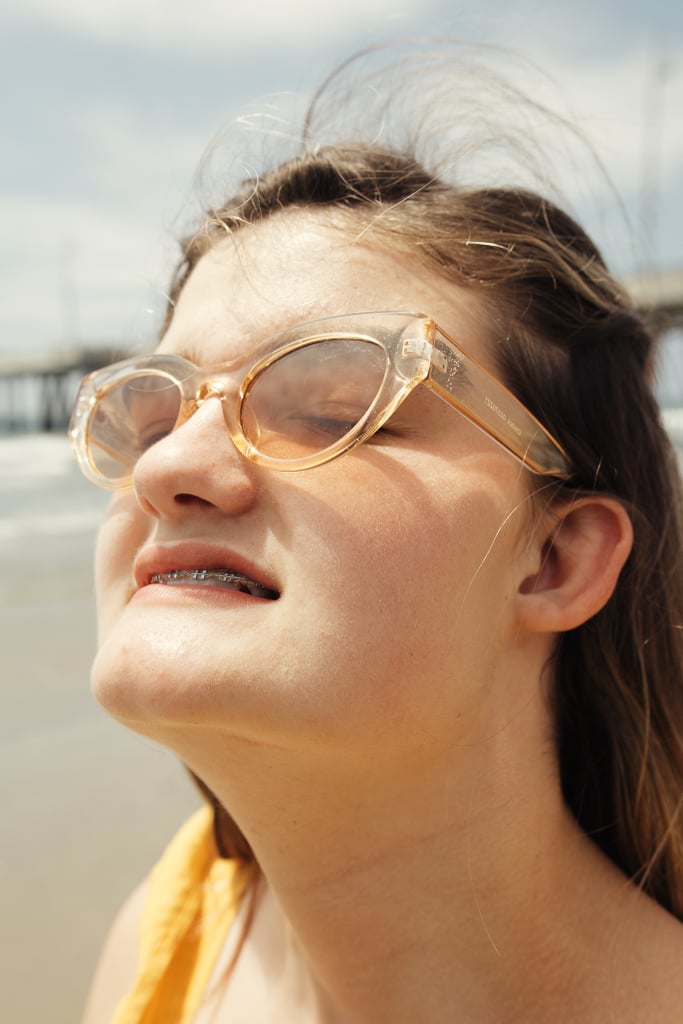For One Teen With a Disability, Being Included in a Beauty Campaign “Changed Everything”
Lexi Brake, 15, has set her sights on becoming a model.
“I’m super tall and super beautiful, so that’s my ultimate dream,” she said, adding with a sincere gust of laughter that could shake a house. “That, and to have a lot of Instagram followers.” She’s long looked up to other models, like her mother Kym’s best friend. And her confidence is palpable; even through the phone, you can hear it thumping.
The problem is, growing up with Dandy-Walker syndrome, a congenital brain malformation that limits the development of different parts of the cerebellum and therefore affects voluntary muscle movements and coordination, she never saw anyone who looked like her in media or advertising. Because despite the beauty industry’s push for more representation across skin tones, gender expressions, and body types, the visibility for people with disabilities (which, by the way, amounts to 61 million, or one in four, in the US) remains largely overlooked. In turn, living with Dandy-Walker syndrome became a part of Brake she wanted to keep hidden, shut off from the world.
“It’s kind of hard to tell people what I have sometimes because they might not understand,” she said, which perhaps serves as the exclamation point to her mom’s observation: “Lexi always yelled at me whenever I would tell people about her syndrome; she would get really embarrassed.”
Then, one night — everything changed. Brake was out to dinner with her mom in California when up-and-coming skincare brand Kinship approached her with an opportunity to model for its first campaign. “It was completely by chance,” said Alison Haljun, the cofounder and president of the brand. “Our producer for the photo shoot was at the same restaurant and saw Lexi and thought, ‘Wow, she would be a great addition to our lineup.'”
They cast her on the spot.
Source: Read Full Article

![The next thing she knew, Brake was getting her model debut on a white sand set in Venice Beach, CA, with a group of people her age from all walks of life — with different backgrounds and challenges and LGBTQ+ experiences — wearing a yellow Anthropologie dress as sunny and bright as the day itself. Finally, she felt like she belonged.
"Lexi came home that day and told everybody where she was and how people loved her for her — you could tell she was finally proud to be who she is," said Kym. "It was amazing to see a company celebrate everybody who's beautiful in their own special way. As a mom, I always see the same girls in campaigns, who are tall and skinny, and this shoot was just so different."
The impact that day had on Brake trickled into the many days that succeeded it. She quickly changed her Instagram handle to @dandy_walker_Lexi, scribbling that she has special needs right at the top in her bio. "I was just so excited to be included in something," said Brake. "Kinship changed everything in my life when they invited me on the photo shoot. Now I just want [people] to see the real me."](https://media1.popsugar-assets.com/files/thumbor/tXbLrDokko5jZA-XL7UkFYm0vU0/160x160/filters:format_auto-!!-:strip_icc-!!-:sharpen-!1,0,true!-/2019/11/05/833/n/1922153/a0f41ea8e6e5b198_LexiBehindtheScenes2/i/next-thing-she-knew-Brake-was-getting-her-model-debut-on-white.JPG)





